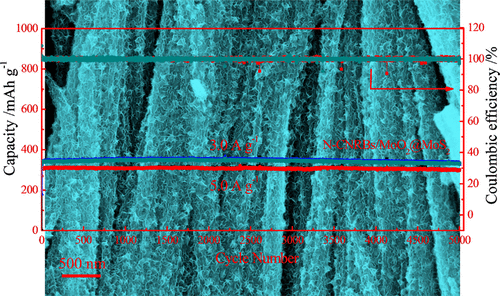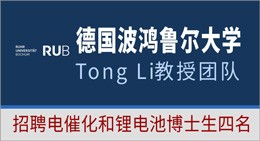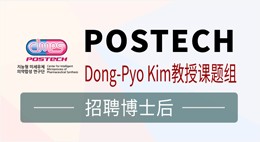当前位置:
X-MOL 学术
›
ACS Appl. Mater. Interfaces
›
论文详情
Our official English website, www.x-mol.net, welcomes your
feedback! (Note: you will need to create a separate account there.)
Encapsulating N-Doped Carbon Nanorod Bundles/MoO2 Nanoparticles via Surface Growth of Ultrathin MoS2 Nanosheets for Ultrafast and Ultralong Cycling Sodium Storage.
ACS Applied Materials & Interfaces ( IF 8.3 ) Pub Date : 2020-01-27 , DOI: 10.1021/acsami.9b18851
Fanyan Zeng 1 , Hongyan Liu 1 , Yang Pan 2 , Maohui Yu 1 , Yaohui Qu 1 , Cailei Yuan 1
ACS Applied Materials & Interfaces ( IF 8.3 ) Pub Date : 2020-01-27 , DOI: 10.1021/acsami.9b18851
Fanyan Zeng 1 , Hongyan Liu 1 , Yang Pan 2 , Maohui Yu 1 , Yaohui Qu 1 , Cailei Yuan 1
Affiliation

|
Conversion-type anode materials possess high theoretical capacity for sodium-ion batteries (SIBs), owing to multi-electron transmission (2-6 electrons). Mo-based chalcogenides are a class of great promise, high-capacity host materials, but their development still undergoes serious volume changes and low transport kinetics during the cycling process. Here, MoO2 nanoparticles anchored on N-doped carbon nanorod bundles (N-CNRBs/MoO2) are synthesized by a facile self-polymerized route and a following annealing. After hydrothermal sulfuration, N-CNRBs/MoO2 composites are encapsulated by surface growth of ultrathin MoS2 nanosheets, acquiring hierarchical N-CNRBs/MoO2@MoS2 composites. Serving as the SIB anode, the N-CNRBs/MoO2@MoS2 electrode exhibits significantly improved sodium-ion storage properties. The reversible capacity is up to 554.4 mA h g-1 at 0.05 A g-1 and maintains 249.3 mA h g-1 even at 10.0 A g-1. During 5000 cycles, no obvious capacity decay is observed and the reversible capacities retain 334.8 mA h g-1 at 3.0 A g-1 and 301.4 mA h g-1 at 5.0 A g-1. These properties could be ascribed to the vertical encapsulation of MoS2 nanosheets on high-crystalline N-CNRBs/MoO2 substrates. The hierarchical architecture and unique heterostructure between MoO2 and MoS2 synergistically facilitate sodium-ion diffusion, relieve volume changes, and boost pseudocapacitive charge storage of N-CNRBs/MoO2@MoS2 electrode. Therefore, the rational growth of nanosheets on complex substrates shows promising potential to construct anode materials for high-performance batteries.
中文翻译:

通过超薄MoS2纳米片的表面生长封装N掺杂碳纳米棒束/ MoO2纳米颗粒,用于超快和超长循环钠存储。
由于多电子传输(2-6个电子),转换型负极材料对钠离子电池(SIB)具有很高的理论容量。钼基硫属元素化物是一类很有前途的高容量基质材料,但是在循环过程中,它们的发展仍然经历着严重的体积变化和低迁移动力学。在这里,锚固在N掺杂的碳纳米棒束(N-CNRBs / MoO2)上的MoO2纳米颗粒通过一条容易的自聚合路线和随后的退火过程合成。水热硫化后,通过超薄MoS2纳米片的表面生长将N-CNRBs / MoO2复合材料封装起来,获得分层的N-CNRBs / MoO2 @ MoS2复合材料。N-CNRBs / MoO2 @ MoS2电极用作SIB阳极,具有显着改善的钠离子存储性能。可逆容量高达554。在0.05 A g-1时为4 mA h g-1,即使在10.0 A g-1时也保持249.3 mA h g-1。在5000次循环中,未观察到明显的容量衰减,可逆容量在3.0 A g-1时保持334.8 mA h g-1,在5.0 A g-1时保持301.4 mA h g-1。这些特性可以归因于MoS2纳米片在高结晶N-CNRBs / MoO2衬底上的垂直封装。MoO2和MoS2之间的层次结构和独特的异质结构协同促进钠离子扩散,缓解体积变化并增强N-CNRB / MoO2 @ MoS2电极的伪电容电荷存储。因此,纳米片在复杂基底上的合理生长显示出有前景的潜力来构造用于高性能电池的阳极材料。没有观察到明显的容量衰减,可逆容量在3.0 A g-1时保持334.8 mA h g-1,在5.0 A g-1时保持301.4 mA h g-1。这些特性可以归因于MoS2纳米片在高结晶N-CNRBs / MoO2衬底上的垂直封装。MoO2和MoS2之间的层次结构和独特的异质结构协同促进钠离子扩散,缓解体积变化并增强N-CNRB / MoO2 @ MoS2电极的伪电容电荷存储。因此,纳米片在复杂基底上的合理生长显示出有前景的潜力来构造用于高性能电池的阳极材料。没有观察到明显的容量衰减,可逆容量在3.0 A g-1时保持334.8 mA h g-1,在5.0 A g-1时保持301.4 mA h g-1。这些特性可以归因于MoS2纳米片在高结晶N-CNRBs / MoO2衬底上的垂直封装。MoO2和MoS2之间的层次结构和独特的异质结构协同促进钠离子扩散,缓解体积变化并增强N-CNRB / MoO2 @ MoS2电极的伪电容电荷存储。因此,纳米片在复杂基底上的合理生长显示出有前景的潜力来构造用于高性能电池的阳极材料。这些特性可以归因于MoS2纳米片在高结晶N-CNRBs / MoO2衬底上的垂直封装。MoO2和MoS2之间的层次结构和独特的异质结构协同促进钠离子扩散,缓解体积变化并增强N-CNRB / MoO2 @ MoS2电极的伪电容电荷存储。因此,纳米片在复杂基底上的合理生长显示出有前景的潜力来构造用于高性能电池的阳极材料。这些特性可以归因于MoS2纳米片在高结晶N-CNRBs / MoO2衬底上的垂直封装。MoO2和MoS2之间的层次结构和独特的异质结构协同促进钠离子扩散,缓解体积变化并增强N-CNRB / MoO2 @ MoS2电极的伪电容电荷存储。因此,纳米片在复杂基底上的合理生长显示出有前景的潜力来构造用于高性能电池的阳极材料。
更新日期:2020-01-29
中文翻译:

通过超薄MoS2纳米片的表面生长封装N掺杂碳纳米棒束/ MoO2纳米颗粒,用于超快和超长循环钠存储。
由于多电子传输(2-6个电子),转换型负极材料对钠离子电池(SIB)具有很高的理论容量。钼基硫属元素化物是一类很有前途的高容量基质材料,但是在循环过程中,它们的发展仍然经历着严重的体积变化和低迁移动力学。在这里,锚固在N掺杂的碳纳米棒束(N-CNRBs / MoO2)上的MoO2纳米颗粒通过一条容易的自聚合路线和随后的退火过程合成。水热硫化后,通过超薄MoS2纳米片的表面生长将N-CNRBs / MoO2复合材料封装起来,获得分层的N-CNRBs / MoO2 @ MoS2复合材料。N-CNRBs / MoO2 @ MoS2电极用作SIB阳极,具有显着改善的钠离子存储性能。可逆容量高达554。在0.05 A g-1时为4 mA h g-1,即使在10.0 A g-1时也保持249.3 mA h g-1。在5000次循环中,未观察到明显的容量衰减,可逆容量在3.0 A g-1时保持334.8 mA h g-1,在5.0 A g-1时保持301.4 mA h g-1。这些特性可以归因于MoS2纳米片在高结晶N-CNRBs / MoO2衬底上的垂直封装。MoO2和MoS2之间的层次结构和独特的异质结构协同促进钠离子扩散,缓解体积变化并增强N-CNRB / MoO2 @ MoS2电极的伪电容电荷存储。因此,纳米片在复杂基底上的合理生长显示出有前景的潜力来构造用于高性能电池的阳极材料。没有观察到明显的容量衰减,可逆容量在3.0 A g-1时保持334.8 mA h g-1,在5.0 A g-1时保持301.4 mA h g-1。这些特性可以归因于MoS2纳米片在高结晶N-CNRBs / MoO2衬底上的垂直封装。MoO2和MoS2之间的层次结构和独特的异质结构协同促进钠离子扩散,缓解体积变化并增强N-CNRB / MoO2 @ MoS2电极的伪电容电荷存储。因此,纳米片在复杂基底上的合理生长显示出有前景的潜力来构造用于高性能电池的阳极材料。没有观察到明显的容量衰减,可逆容量在3.0 A g-1时保持334.8 mA h g-1,在5.0 A g-1时保持301.4 mA h g-1。这些特性可以归因于MoS2纳米片在高结晶N-CNRBs / MoO2衬底上的垂直封装。MoO2和MoS2之间的层次结构和独特的异质结构协同促进钠离子扩散,缓解体积变化并增强N-CNRB / MoO2 @ MoS2电极的伪电容电荷存储。因此,纳米片在复杂基底上的合理生长显示出有前景的潜力来构造用于高性能电池的阳极材料。这些特性可以归因于MoS2纳米片在高结晶N-CNRBs / MoO2衬底上的垂直封装。MoO2和MoS2之间的层次结构和独特的异质结构协同促进钠离子扩散,缓解体积变化并增强N-CNRB / MoO2 @ MoS2电极的伪电容电荷存储。因此,纳米片在复杂基底上的合理生长显示出有前景的潜力来构造用于高性能电池的阳极材料。这些特性可以归因于MoS2纳米片在高结晶N-CNRBs / MoO2衬底上的垂直封装。MoO2和MoS2之间的层次结构和独特的异质结构协同促进钠离子扩散,缓解体积变化并增强N-CNRB / MoO2 @ MoS2电极的伪电容电荷存储。因此,纳米片在复杂基底上的合理生长显示出有前景的潜力来构造用于高性能电池的阳极材料。



































 京公网安备 11010802027423号
京公网安备 11010802027423号